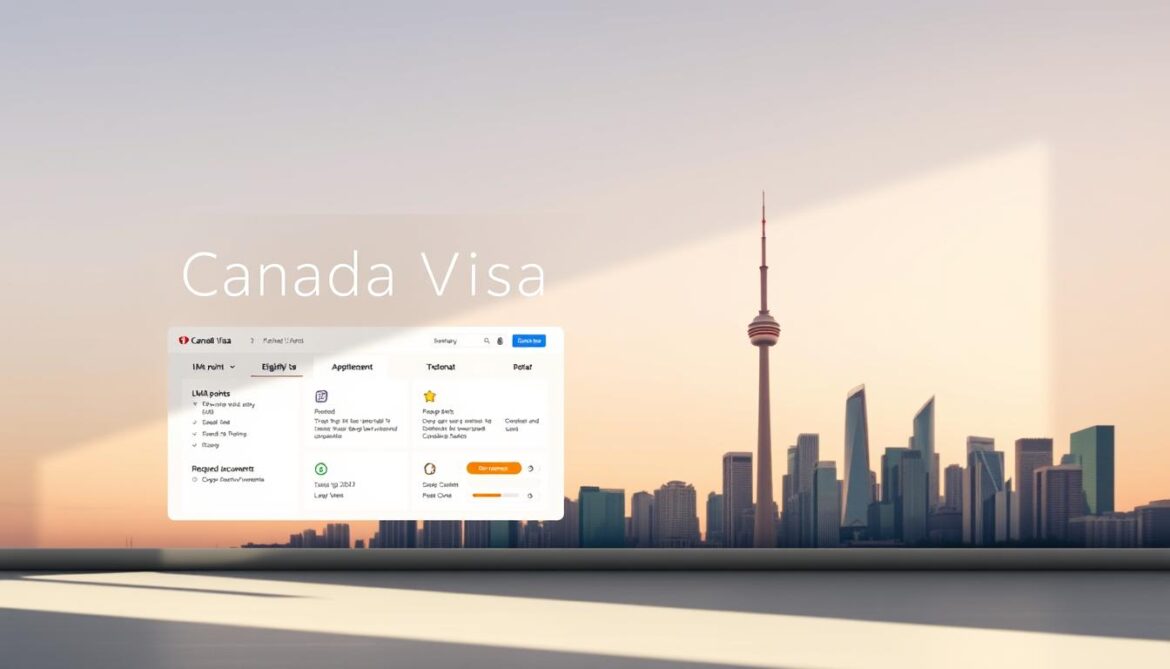Did you know that before March 2025, a valid job offer backed by an LMIA could give applicants up to 200 extra points in Canada’s Express Entry system? This advantage helped thousands of skilled workers fast-track their immigration journey. Now, with recent policy changes, understanding the Canada visa portal and adapting your strategy is more important than ever.
The Express Entry system ranks candidates using the Comprehensive Ranking System (CRS). Before the shift, LMIA-supported job offers significantly boosted CRS scores. The Canada visa portal remains your go-to resource for updates, especially after these adjustments.
This guide explores how to navigate the new rules effectively. Whether you’re applying for Canada immigration or optimizing your profile, we’ll help you stay ahead.
Recent Changes to LMIA Points in Express Entry
Canada’s immigration rules shifted dramatically, removing a key advantage for skilled workers. Before March 2025, a valid job offer could add 200 CRS points to your profile. Now, this boost is no longer available for new applicants.

What Was Removed and Why
The government eliminated points for LMIA-backed job offers to prioritize other factors, like education and language skills. This change aims to create a fairer entry pool for all candidates.
If you received an invitation before March 25, 2025, you’re protected under grandfathering rules. New applicants must adapt their strategies.
Key Dates and Transition Rules
- March 25, 2025: Cutoff date for LMIA-related points.
- Existing ITA holders keep their CRS scores, but new profiles won’t qualify.
- Check your status on the Canada visa portal for updates.
Relying on old advice could hurt your chances. Always verify rules using official sources.
How the Removal of LMIA Points Affects You
The recent policy shift in Canada’s immigration system has reshaped how candidates are ranked. Without the extra boost from job offers, your profile must stand out in other ways. The Express Entry pool now prioritizes skills like French proficiency and STEM expertise.

Winners and Losers in the New System
Candidates with these traits gain an edge:
- French bilinguals: Additional points for language skills.
- STEM professionals: High-demand fields like IT and engineering.
- Provincial nominees: PNPs compensate for lost federal points.
Meanwhile, those relying solely on job offers face steeper competition. Analysts note a 15% drop in LMIA-dependent applicants since March 2025.
Predicted CRS Score Trends
Historical data shows CRS cutoffs averaging:
- 2024: 485–520 (with LMIA boosts).
- 2025: 470–495 (current projections).
“Targeted draws for healthcare and tech sectors will likely keep scores below 500.”
Check the Canada visa portal for real-time updates. Adapting to these factors could secure your invitation.
How to Compensate for Lost LMIA Points
Adapting to new immigration rules means focusing on alternative ways to strengthen your application. While previous benefits are no longer available, your profile can still shine by targeting high-value areas.

Boosting Language Test Scores
Strong language skills remain a top priority. Aim for CLB 9 or higher in English or French to maximize your comprehensive ranking.
French bilinguals gain extra points—up to 50 for dual proficiency. Consider immersion programs or targeted tutoring to refine fluency.
Leveraging Canadian Work Experience
Local experience is a powerful asset. Even one year in a skilled role adds 40+ points to your profile.
Prioritize roles in high-demand sectors like healthcare or tech. These often align with targeted draws for faster processing.
Educational Credential Strategies
Optimize your education credentials for maximum impact. A master’s degree paired with a diploma can add 50+ points.
- Use the Canada visa portal to verify approved institutions.
- French-taught programs offer 15+ bonus points.
- Microcredentials from Canadian schools enhance adaptability.
“Combining education with language mastery creates a competitive edge in today’s system.”
Alternative Pathways Without LMIA Points
Canada’s immigration landscape now offers strategic alternatives for those no longer benefiting from previous advantages. Provincial programs and targeted Express Entry draws provide viable routes to permanent residency. Focus on these options to strengthen your profile in the comprehensive ranking system.

Provincial Nominee Programs (PNPs)
PNPs address local labour market gaps, often prioritizing high-demand sectors like healthcare and tech. A nomination adds 600 points to your CRS score—significantly boosting your chances of an invitation.
- Atlantic Immigration Program: No age restrictions, ideal for skilled workers.
- STEM-focused streams: Tech professionals benefit from fast-tracked processing.
- Provincial Nominee Programs also cater to francophone candidates outside Quebec.
Targeted Express Entry Draws
In 2025, 35% of invitations went to French speakers, while healthcare workers received 28%. Adapt your profile to align with these priorities:
- Combine French proficiency with healthcare experience for dual advantages.
- Monitor IRCC’s quarterly updates to anticipate STEM-specific rounds.
- Use the Canada visa portal to analyze historical draw trends.
“Category-based selections reward niche skills, making targeted preparation essential.”
Conclusion
Navigating Canada’s updated immigration system requires fresh strategies after recent changes. The March 2025 policy shift removed advantages like job offer-based boosts, making the Canada visa portal your best resource for real-time updates.
Focus on language skills, education, and provincial nominations to strengthen your CRS score. These human-capital factors offer long-term benefits beyond temporary policy changes.
Reassess your Express Entry profile today to align with Canada’s evolving priorities. Adaptability ensures your journey to permanent residency stays on track.



